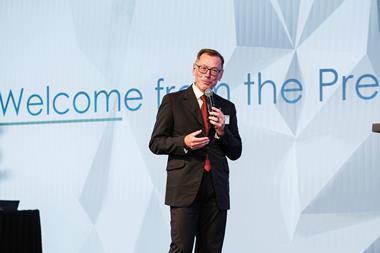 The potential for self-driving cars in finished vehicle logistics has been highlighted by the recent start of Mercedes-Benz S-Class production in Sendelfingen, Germany, where a newly built car drove itself off the assembly line to a loading area about 1.5km away.
The potential for self-driving cars in finished vehicle logistics has been highlighted by the recent start of Mercedes-Benz S-Class production in Sendelfingen, Germany, where a newly built car drove itself off the assembly line to a loading area about 1.5km away.
Cameras, together with radar and ultrasonic sensors, worked in conjunction with software to control acceleration and braking, ensuring the vehicle stayed on track and reached its destination.
Markus Schäfer, divisional board member of Mercedes-Benz Cars, production and supply chain, said: “The S-Class's independent journey from the production line to the plant's loading area shows the future of how we will be able to use driver assistance systems in production.
“We are taking the next step in the digitalisation of our complete value-added chain. We are systematically applying industry 4.0 in all areas from development and production through to the customer. Perhaps, in the not too distant future, a Mercedes-Benz will even find its own way from the production line to its new owner.”
Having displayed the potential, the carmaker is now piloting the possible use of the system for series production.
Currently, members of staff drive finished vehicles from the assembly halls to the loading car parks. A shuttle service then brings the employees back to their starting point.
The company said the start of production for the new S-Class also introduced state-of-the-art manufacturing processes and cutting-edge industry 4.0 solutions in the assembly area.
Among them is flexible delivery of small-load carriers to the production line, controlled by a system known as FLOW (Flexible Logistics Optimised Warehouse).
This new driverless picking system provides materials to the production line as and when they are needed. The whole system is currently part of a pilot test that aims to validate it for series production for the new S-Class.
The small-load carriers are transported autonomously around the shop floor via a guidance system with reference magnets embedded in the hall floor; carriers can be automatically allocated to any specific storage shelf.
The driverless picking system is equipped with laser scanners to prevent collisions.
“The filling of the so-called 'shopping basket' represents the interface to the logistics area. It is pre-selected with all necessary parts and components required to fulfil the specific customer order and then delivered directly and completely automatically to the line, negating the need to keep materials stored on shelves,” said the company in a statement.





































